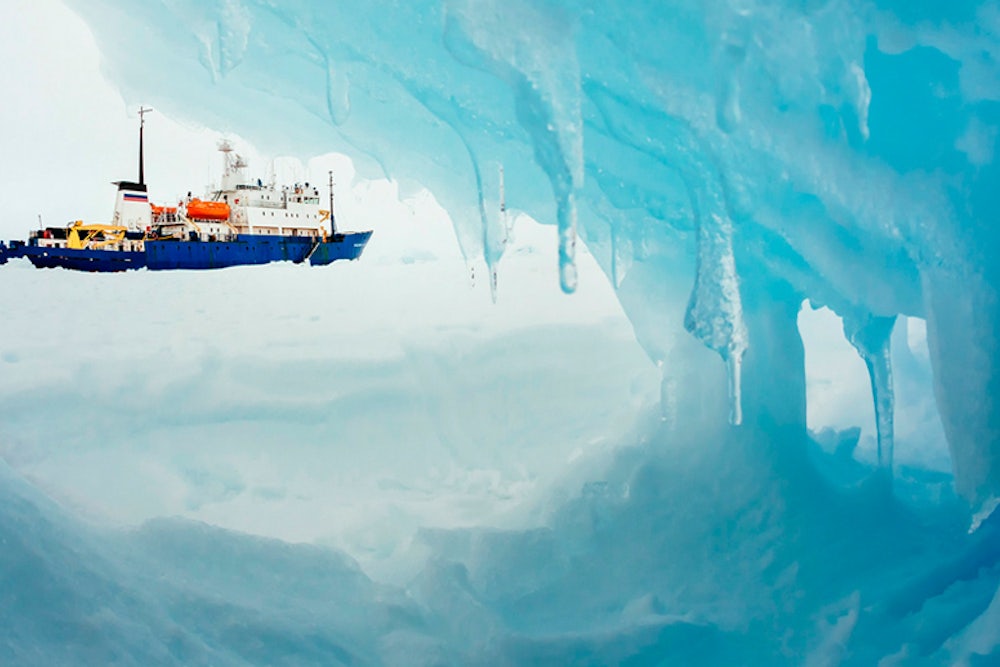Location: Antarctica Date: December 29, 2013 Photographer: Andrew Peacock
A ship surrounded by ice, ingeniously molded by nature so that it looks like the devouring mouth of a gigantic whale: the frozen ghost of Moby Dick complete with killer teeth (a visual pun on frostbite?).
Over Christmas, the MV Akademik Shokalskiy and the 74 people onboard became trapped in the ice of Antarctica. This was a story that everyone could identify with, especially in Britain where the annual shutdown of rail services left people stranded in similarly desperate circumstances: marooned at their parents or in-laws with only the news on television—specifically news of the attempts to rescue the Akademik Shokalskiy—for relief. This rescue, however, lacked an essential part of a truly compelling rescue mission: not just the possibility that it might fail (which it did, repeatedly) but that it might result in domino failure, whereby the people doing the rescuing end up in need of rescue. In such situations, everyone involved gets sucked into a vortex of ever-deepening calamity. That’s what gave Black Hawk Down its dizzying narrative compulsion.
On a more modest scale, newspapers at this time of year always run stories about a dog or child who fell through the thin ice of a lake that then claimed the life of the owner / parent or passerby who tried to save them. We like stories like this. They make us feel—in a warm and dry, basically selfish way—that we are fundamentally selfless. Whereas this rescue mission, despite the abortive attempts of various icebreakers, was doomed to succeed. The worst-case scenario was that a helicopter would fly everyone to safety with the loss only of a vessel whose sole aim in life was to get stuck in ice and generate news. The odds of survival were so firmly in their favor that the crew never had a chance to begin discussing the ethics of cannibalism, let alone whom might be eaten first. The story was further undermined by the larger history of which it is a part: namely that, with global warming proceeding apace and the ice caps in such danger, it was a remarkable achievement to have gotten stuck in the first place. If all else failed, they would only have had to wait a couple of months for the whole situation to, as it were, melt away and resolve itself.
All in all, it’s a far cry from Ernest Shackleton’s expedition. My first thought on seeing this picture was that it was a remake of one of Frank Hurley’s famous photographs of the ice-locked Endurance in 1915. It actually bears a closer resemblance to stills from Herbert Ponting’s 1910–1912 footage of Robert Falcon Scott’s ship the Terra Nova, ironically reminding us that no new ground is being broken, that the visual terra here is olda than it looks. Just as the ice has the ship in its maw, so this photograph has earlier images of Antarctic history frozen within its frame, like a boat in a bottle.
